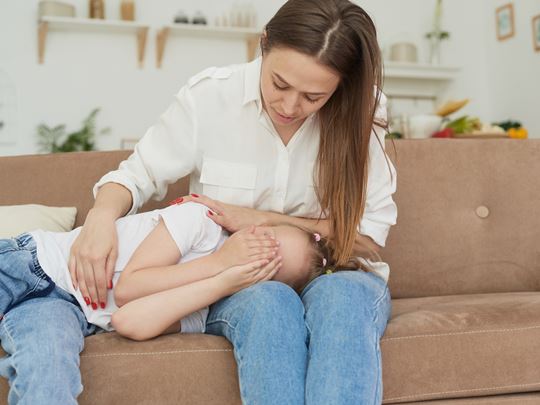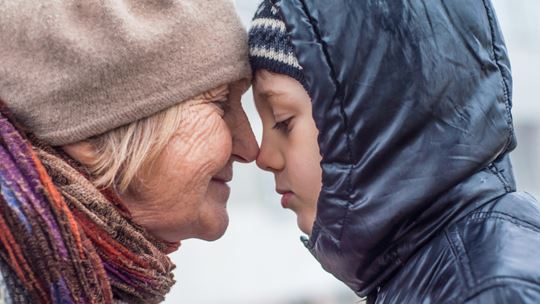Fight, flight, freeze or collapse are survival modes that are wired into all human beings.
These survival modes derive from early evolution which allowed humans to detect danger and respond quickly to life-threatening situations, such as a predator. Despite the stressors being very different in today’s modern society, our fear response hasn’t really evolved.
This fear response is something that you will probably have experienced. Since the amygdala – the part of the brain that is responsible for your fight, flight, freeze or collapse response – doesn’t know the difference between a real and a perceived threat, it’s not uncommon to experience this response to things that in hindsight, are not that scary at all – like an email from your boss requesting a meeting, for example. When your stress response is triggered, you may experience a racing heart, sweaty palms, and quick breathing.
Children and young people in care who have experienced complex trauma will likely have an overactive amygdala, which continually signals danger even when they’re safe. This is a way in which a child’s brain has adapted to survive trauma.

What is fight, flight, freeze and collapse?
Fight-or-flight and the nervous system
When faced with acute stress, our brain activates the fear response and triggers a sequence that prepares us for a fight-or-flight reaction. Our sympathetic nervous system kicks in, causing a sudden release of stress hormones like adrenaline, noradrenaline, and cortisol. As a result, our blood pressure, breathing rate, and heart rate increase.
The fear response is crucial for dealing with serious dangers, and has played an enormous role in helping humans survive. When under threat, this response gets the body ready to either run away or fight the danger.
Once the threat has passed, the parasympathetic nervous system helps the body recover. It lowers blood pressure and heart rate to bring the body back to a calm state. This process typically takes between twenty minutes and an hour for individuals who aren’t living with trauma.
The impact of trauma on fight-or-flight response
For those living with acute or complex trauma, not only does their amygdala constantly signal danger, but it can also take much longer for them to return to a normal state once a threat has passed.
Their stress baseline is generally higher, making them more reactive to everyday situations. They are more likely to be triggered by feelings, events, sensory information and people – often without even realising it.
This is common in individuals with Post Traumatic Stress Disorder (‘PTSD’) or other forms of complex trauma. Many require specific, conscious interventions to manage daily life.
Chronic stress can also have a long-term impact on physical health, including an increased risk of depression, headaches, migraines, chronic fatigue, high blood pressure, high cholesterol, gastrointestinal issues, heart attack, and stroke. These health issues can occur when somebody is in a constant fight-or-flight state and can be one of the long-term effects of childhood trauma.
Fight-or-flight response examples
Before we look at grounding techniques to bring a child out of fight-or-flight mode, it’s essential to understand the signs that their fear response to stress has been triggered. Here is a scenario, along with examples of how a child living with trauma may react, depending on whether they fight, flee, freeze, or collapse.
The child is in the classroom, and the teacher tells them off for talking. Due to their trauma, they are on constant high alert, so they perceive this as a threat, triggering their fear response.
- Fight: They may become argumentative, yell, or lash out as they try to protect themselves from the perceived threat.
- Flight: They may run out of the classroom or refuse to engage with the teacher, avoiding the perceived threat
- Freeze: They may become immobilised by fear and struggle to respond to the teacher or make eye contact. They may be unable to speak until the perceived threat has passed.
- Collapse: They may dissociate, appearing to have zoned out as their mind and body disconnect. They could become limp and, in some cases, faint.
Grounding techniques to help bring a child out of ‘Fight or Flight’
As a foster parent, the fight, flight, freeze or collapse response is something that you need to understand when caring for children with histories of abuse or neglect.
Grounding techniques can help your child get back to the present and bring their body back into the normal state. Once they’re back in the here and now, you can work through whatever has triggered the fight-or-flight response together.
Remember, when children are outside their window of tolerance, they’re in survival mode. This means they can’t access the higher parts of the brain that are responsible for thinking, feeling, learning and memory.
These grounding techniques are an essential first step in helping a child return to a calm state. Only then can you support them in processing what happened to help them move forward.
Below are some grounding techniques you can try to help a child whose acute stress response has been triggered.

1) Deep Breathing Exercises
There are several deep breathing exercises that can help anybody, including children, move out of fight-or-flight.
Breathing deeply into the lungs slows heart rate. This signals to the body and the parasympathetic nervous system that there is no longer a threat, helping return the body to a normal state.
Spend time testing different breathing exercises with the young person in your care. Once they’ve found one that works for them, you can remind them to use it when their fight-or-flight response is activated. You can coach them through the exercises by breathing with them.
Here is a simple breathing exercise that anybody can do. Breathe in through the nose for a count of five, hold the breath for a count of two, and then exhale through the mouth for a count of seven. Repeat as many times as is necessary to return to a normal state.
There are lots of YouTube videos on breathing exercises for kids. You can also download apps like Calm and Mind, which are full of quick and easy meditation practices.
2) Sensory Exercises
Sensory techniques can be very effective in helping to ground children who are in fight-or-flight. Looking around, touching, hearing, seeing, and feeling their surroundings can help bring a child who is in a fearful state back into the present. Sensory exercises can also be useful for children who experience flashbacks.
With this grounding technique, ask them to find:
- 5 things they can see
- 4 things they can feel
- 3 things they can hear
- 2 things they can smell
- 1 thing they can taste
Repeat as many times as needed to calm the nervous system.
3) Rhythmic Movement
Anyone who has comforted a crying baby will know just how soothing rhythmic movement can be.
Rhythmic movement such as running, dancing and drumming helps integrate the child’s mind and body, reset the nervous system, and bring the child back to a calm state. Activities should be easily accessible, relevant to the child’s ability, and full of simple, repetitive, familiar and gentle movement.
These kinds of activities can be even more powerful if they also involve ‘bilateral stimulation’, which gets the left and right hemispheres of the brain coordinating with one another again.
When a child experiences a stressful event and goes into fight, flight, freeze, or collapse mode, rhythmic and bilateral movements help the brain self-regulate. These movements redirect the resources that had rushed to the amygdala for survival back to the higher-functioning parts of the brain.
Other soothing activities include swinging, rolling back and forth on an exercise ball, or sitting in a rocking chair. It works for grown-ups too – are you soothed by knitting, playing a musical instrument, swimming, or gardening?
4) Music
Music can be an ideal aid in helping a child become more grounded.
Listening to music with headphones can help children feel calmer and more in control. You could also suggest singing a song together to help them breathe deeper.
Any music that your child likes can help with grounding, but it can be useful to find music that has been composed specifically to calm the mind.
5) Exercise
The fear response can stimulate various physical symptoms, including rushes of adrenaline and cortisol and increased muscle tension. So, physical activity can be ideal for helping a child become more grounded.
You could take a short walk in nature together, practising mindfulness exercises along the way. While walking, you could ask your child to notice things around them, like trees and flowers. These safe and comforting things can help bring a child who is in fight, flight, freeze or collapse back down to earth and encourage their body into a calmer and more neutral state.
6) Further therapeutic techniques
There are many therapeutic interventions that, as a foster parent, you may wish to explore when a stressful situation triggers your child’s fight-or-flight response. However, techniques such as tapping and the butterfly hug require specialist training. You’ll also need to practise them with your young person while they’re in a calm state to ensure they’ll feel comfortable using them when they’re in fight-or-flight.
Other ways you can help
Depending on the history of the child in your care, their body may have a faster automatic fear response than you are used to. As a foster parent, the most important thing you can offer a child is a warm, affirming, secure and consistent relationship with you.
